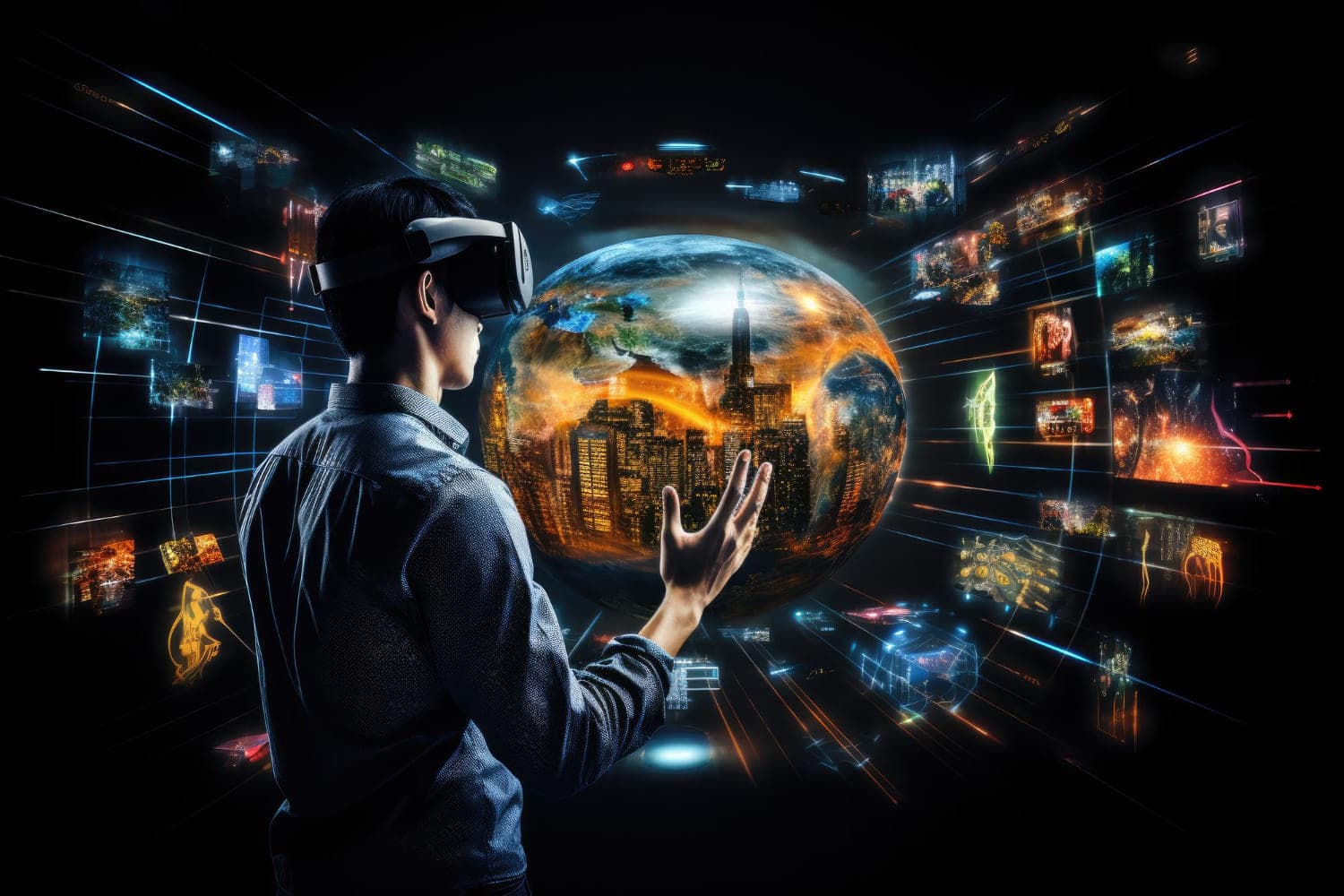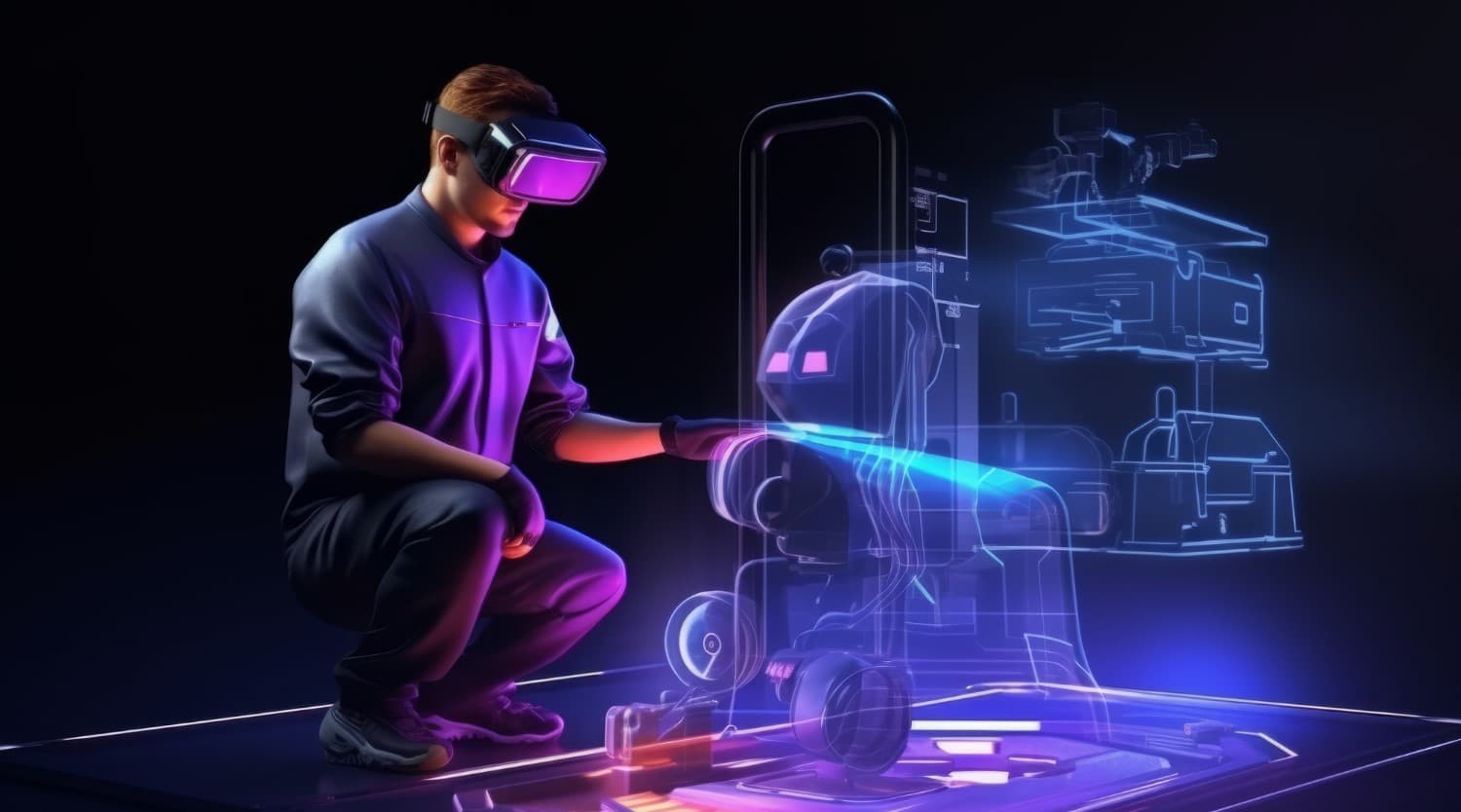5 min read
NextGen Healthcare: Redefining Immersive Technology with Bell Immersive’s XR for Enhanced Patient Care.
Recognizing the universal need to enhance outcomes for patients facing health challenges, there is a growing demand for advanced technological tools that cater specifically to medical training, investigation, and diagnostics.

Written By
Shweta Karnad
Published On
18 Dec 2023
Contents
Sign up for our newsletter
In many geo-locations, thousands of individuals are affected by various health conditions annually. Recognizing the universal need to enhance outcomes for patients facing health challenges, there is a growing demand for advanced technological tools that cater specifically to medical training, investigation, and diagnostics.
In response to this widespread need, we introduce a groundbreaking technological initiative aimed at creating an Extended Reality (XR) platform. This platform seamlessly integrates augmented and virtual reality, providing an immersive visualization experience for anatomical structures derived from state-of-the-art imaging techniques.
Our XR solution is meticulously designed to serve professionals across various fields, offering an immersive navigation experience through intricately detailed structures. Our solution goes beyond traditional diagnostics. It extends its utility to training environments, offering educators and students a comprehensive understanding of anatomy and function within virtual spaces.
This innovative initiative aims to address a critical gap in existing approaches to managing complex anatomical data and emphasizes the transformative potential of immersive technology.
Let’s begin…
In recent years, the landscape of healthcare has been significantly altered by the arrival of medical augmented and virtual reality amalgamated into the immersive space of extended reality (XR).
This groundbreaking technology has transformed the traditional approaches to examining and understanding the complexities of the human body.
At the forefront of this revolutionary wave is Bell Immersive, with its cutting-edge XR technology playing a pivotal role in reshaping medical diagnostics. By providing doctors, researchers, clinicians, educators, and students in the field of medicine.
Bell Immersive is contributing to more precise and effective patient care, ushering in a new era of possibilities.
Introduction
Medical augmented and virtual reality has become a bridge between technology and healthcare, offering a novel dimension to medical examinations. This article shines a spotlight on Bell Immersive’s XR technology, exploring its profound impact on empowering doctors to gain a deeper understanding of anatomical structures.
This empowerment, in turn, is revolutionizing the diagnostic process, creating a paradigm shift in how medical professionals approach patient care with:
1. Enhanced Visualization for Precision Diagnosis
Bell Immersive’s XR technology is a game-changer in allowing doctors to visualize and interact with three-dimensional representations of anatomical structures during medical examinations. This heightened visualization capability is not merely a technological novelty; it is a powerful tool for achieving a more accurate assessment of medical conditions. By aiding in the early detection and diagnosis of diseases, this technology becomes a crucial asset in the medical resource against various health challenges.
This advanced visualization goes beyond conventional imaging techniques, providing a holistic view of anatomical structures. Physicians can explore the intricacies of the human body in unprecedented detail, uncovering nuances that might escape traditional imaging methods. The ability to navigate through three-dimensional models enhances spatial understanding, enabling doctors to pinpoint abnormalities with greater precision.
2. Virtual Anatomy Exploration
One of the remarkable aspects of Bell Immersive’s medical XR technology is its ability to create virtual anatomical models in real-time. Through XR-enhanced devices, doctors can virtually “see through” the human body, examining organs, tissues, and structures with unparalleled clarity. This immersive experience goes beyond diagnostic accuracy; it becomes a cornerstone for advancing medical education and training. Medical professionals can now delve into the intricacies of the human body in ways previously unimaginable.
The virtual anatomy exploration facilitated by Bell Immersive’s XR technology is not limited to a static representation. Physicians can dynamically interact with virtual models, manipulating and dissecting them to gain deeper insights. This interactive learning environment transcends traditional anatomical studies, offering a hands-on approach that enhances the educational experience for medical professionals.
3. Surgical Planning and Navigation
In surgical settings, Bell Immersive’s XR technology assumes a pivotal role in both preoperative planning and intraoperative navigation. Surgeons can overlay critical information directly onto a patient’s anatomy, providing precise guidance during complex procedures. This not only minimizes risks associated with surgeries but also contributes to shorter recovery times and improved overall patient outcomes. The integration of XR into surgery planning is a testament to the transformative potential of this technology in critical medical interventions.
The precision afforded by XR-enhanced surgical planning is unparalleled. Surgeons can simulate procedures, visualize potential challenges, and strategize the most effective approaches. This not only enhances the success rates of surgeries but also reduces the likelihood of complications. The real-time navigation capabilities during surgery further empower surgeons to make informed decisions, ensuring optimal outcomes for patients.
4. Patient Education and Engagement
Bell Immersive’s XR technology exceeds the limitations of the operating room, extending its impact on patient education and engagement. By enabling patients to visualize their anatomy through XR, individuals gain valuable insights into their conditions. Armed with a deeper understanding, patients can make informed decisions about their healthcare journey. This interactive approach enhances doctor-patient communication, fostering a collaborative environment where individuals actively participate in shaping their treatment plans.
Patient education is a cornerstone of effective healthcare, and XR technology acts as a bridge between medical professionals and patients. Instead of relying solely on verbal explanations or two-dimensional images, patients can experience a three-dimensional representation of their medical condition. This immersive experience not only demystifies complex medical information but also empowers patients to actively engage in discussions about their treatment options
Immersive Breakthrough
Our Extended Reality (XR) solution, a collaborative effort with the Oculus Quest 2 for virtual reality (VR) and HoloLens for augmented reality (AR), stands as a groundbreaking advancement in medical technology. Tailored for medical professionals, this immersive platform facilitates the exploration, analysis, and annotation of intricate 3D models.
Our XR-Solution
1. 3D Model Visualization: Users can immerse themselves in realistic 3D models, meticulously reconstructed from actual patient data. The flexibility to use either VR headsets (Oculus Quest 2) or AR glasses (HoloLens) enhances the user experience.
2. Multilayer Data Exploration: Empowering researchers and clinicians, this feature allows seamless toggling between various data layers, providing insights into blood flow dynamics, vessel diameters, and tissue characteristics. This comprehensive understanding is instrumental in solving the complexities of brain function and pathology.
3. Real-time Annotation: Collaboration is elevated through real-time annotation capabilities. Users can annotate 3D models with virtual markers and notes, fostering joint efforts in diagnosis, research, and educational endeavors.
Benefits
1. Enhanced Visualization:
The immersive experience significantly amplifies comprehension and retention of intricate brain structures and their functions.
2. Collaborative Research:
Real-time annotation and sharing capabilities contribute to collaborative research initiatives, fostering knowledge exchange among researchers and clinicians.
3. Medical Education:
Augmented and virtual reality open avenues for captivating and interactive educational opportunities, enhancing understanding in the field of brain medicine.
Challenges and Future Prospects
While the promises of medical XR, including contributions from Bell Immersive, are immense, some general challenges demand attention, like data security, standardization, and the need for widespread adoption must be addressed for the technology to reach its full potential.
However, the medical community is witnessing ongoing advancements in XR technology, coupled with collaborative efforts, paving the way for a future where XR seamlessly integrates into routine medical practice.
1. Addressing Data Security:
As XR technology relies on the processing and interpretation of sensitive medical data, ensuring robust data security measures is paramount. Collaborations between technology developers, healthcare providers, and cybersecurity experts are essential to establish and enforce stringent data protection protocols.
2. Standardization in Medical XR:
To ensure interoperability and cohesive integration of XR into medical practices, standardization efforts are crucial. Developing industry-wide standards for XR applications in healthcare will facilitate smoother collaborations, data sharing, and the overall advancement of the technology.
3. Widespread Adoption:
The successful integration of XR into routine medical practice requires widespread adoption across healthcare institutions. This involves not only technological readiness but also comprehensive training programs for medical professionals. Initiatives to educate and familiarize healthcare providers with XR applications will play a vital role in driving adoption.
The prospects of medical XR are promising, with ongoing research and development paving the way for innovative applications. As technology continues to evolve, addressing these challenges will be pivotal in unlocking the full potential of XR in healthcare.
Conclusion
As medical extended reality(XR), particularly with Bell Immersive’s cutting-edge technology, continues to evolve, its transformative impact on healthcare becomes increasingly undeniable. The ability of doctors to explore and comprehend the human body in unprecedented ways is revolutionizing diagnostics, surgery, and overall patient care.
Embracing our transformative technology isn’t merely an option; it holds the potential to reshape the entire landscape of medicine, offering new and unexplored possibilities for enhanced precision and improved healthcare outcomes.
In conclusion, Bell Immersive’s XR technology represents not just a step forward but a leap into the future of healthcare. It is a catalyst for change, a beacon guiding the medical field toward a realm where technology and human expertise converge for the betterment of all. The ongoing collaboration between technology innovators like Bell Immersive and the medical community promises a future where medical augmented-virtual reality, XR becomes an integral part of every healthcare professional’s toolkit.
The journey is underway, and the destination holds the promise of a healthier and more informed world.
Contact Bell Immersive Technologies today to learn more about how we can help your business leverage the power of machine-learning algorithms for fraud detection and prevention
Other Articles
Some articles that may interest you

Navigating the Virtual Frontier: Complexities and Opportunities to Consider in Developing AR/VR Solutions
Shweta Karnad
16 Apr 2024

Preparing for the Unexpected: Exploring ALERTSim, the Next Generation Emergency Response Simulator
Ashish Kulkarni
11 Apr 2024

Exploring the Immersive Frontier: The Rise of Augmented and Virtual Reality
Ashwina Das
07 Feb 2024


